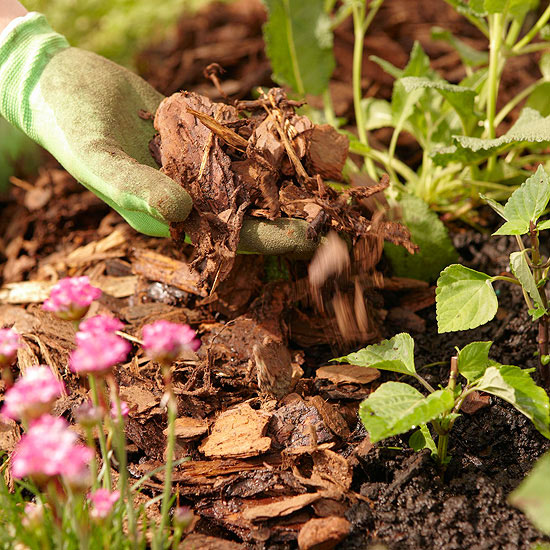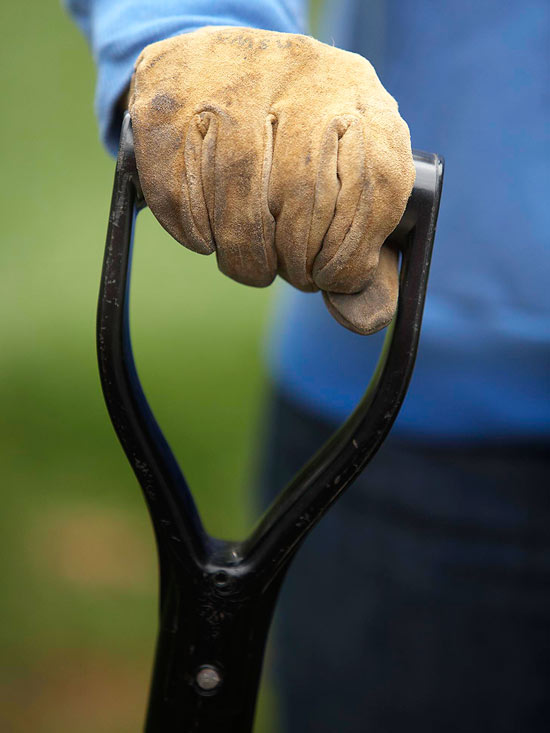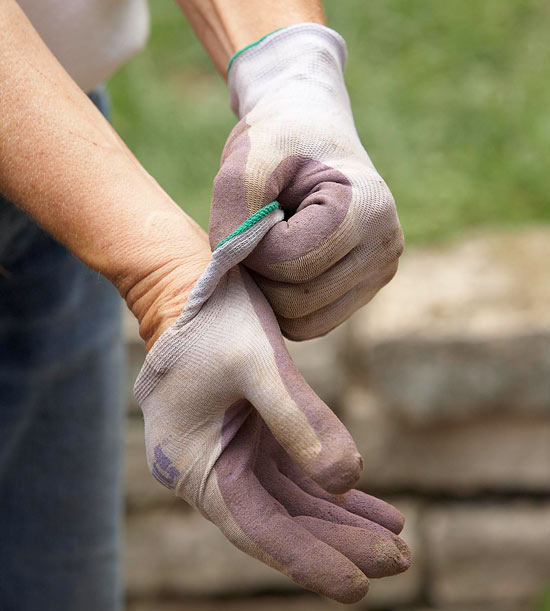






Working with soil can quickly dry out hands and cause cracking, not to mention it can leave behind ground-in dirt that's hard to remove, especially under fingernails. Gloves protect hands from soil and drying, and they provide a barrier to any questionable organisms contained in manure and compost. Gloves also help prevent blisters from using shovels, rakes, and other gardening tools. But with the range of choices, we're here to help in the form of a garden glove buyer's guide.
The best garden gloves are the ones that fit your hands and the task. If the gloves are too big, they will limit your dexterity and possibly chafe and cause blisters. Small gloves limit hand movement. No one pair of gloves will be ideally suited to all types of gardening activities. Here are the basic types of gardening gloves and the jobs for which they are best suited.
continue reading below
Cloth Gloves
When and how to use them: These gloves are suitable for light planting chores, mixing soil, digging, and raking. Some styles have palms and fingers reinforced with leather or latex, making them longer lasting, better for gripping, and more impervious to prickles and thorns. They can be tossed into the washing machine.
Garden glove tip: Cloth gloves can soak up water and become cold and clammy. They're neither durable nor expensive, so plan on replacing them regularly.
Sheepskin & Goatskin Gloves
When and how to use them: These gloves are suited for planting and digging. They are ideal for cutting, planting, digging, raking, and shoveling. Both sheepskin and goatskin gloves keep your hands relatively dry and remain supple even after they get wet. Stronger than cloth and very comfortable, goatskin gloves are the top of the line in comfort and dexterity. Some styles can be machine-washed.
Garden glove tip: Sheepskin tears more easily than other leathers, so it's less desirable for pruning trees, shrubs, and brambles. These gloves do not stand up well to constant abrasion, so wear heavier-duty cowhide gloves when building a stone wall or patio.
Rubber & PVC-Coated Gloves
When and how to use them: Nothing beats these gloves for working with mud and prickly plants. What these gloves lack in dexterity they make up for in protection. Some styles reach up to your elbow.
Garden glove tip: If you are allergic to rubber, choose the PVC option.

Cowhide & Pigskin Gloves
When and how to use them: Use these gloves for handling wood and rocks, planting trees and shrubs, and operating power equipment. Traditional work gloves, these are generally more durable than other leather gloves.
Garden glove tip: Some types are lined with fleece or wool for winter.
Neoprene & Nitrile Gloves
When and how to use them: These gloves offer the best protection when working with greases, oils, herbicides, pesticides, and other caustic materials.
Garden glove tip: Make sure your gloves are labeled for use with the chemicals you are using.
Guide to Fitting
For the best fit, try on leather and cloth gloves before you buy. Make a fist and check for any pinching or bulky seams. If trying on isn't possible, hold your hand flat and measure around your hand knuckles (minus thumb) to determine the right size. Then use this general garden glove guide to fit for sizing.
Caring for Gardening Gloves
Keep your garden gloves in tip-top shape with this garden glove guide to care.
Copyright © www.100flowers.win Botanic Garden All Rights Reserved